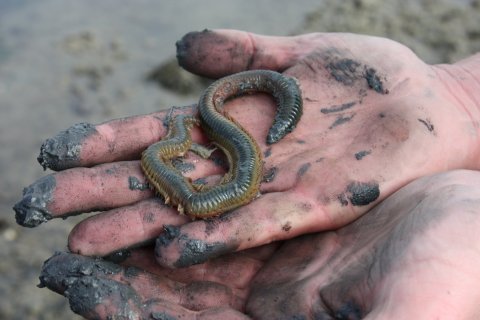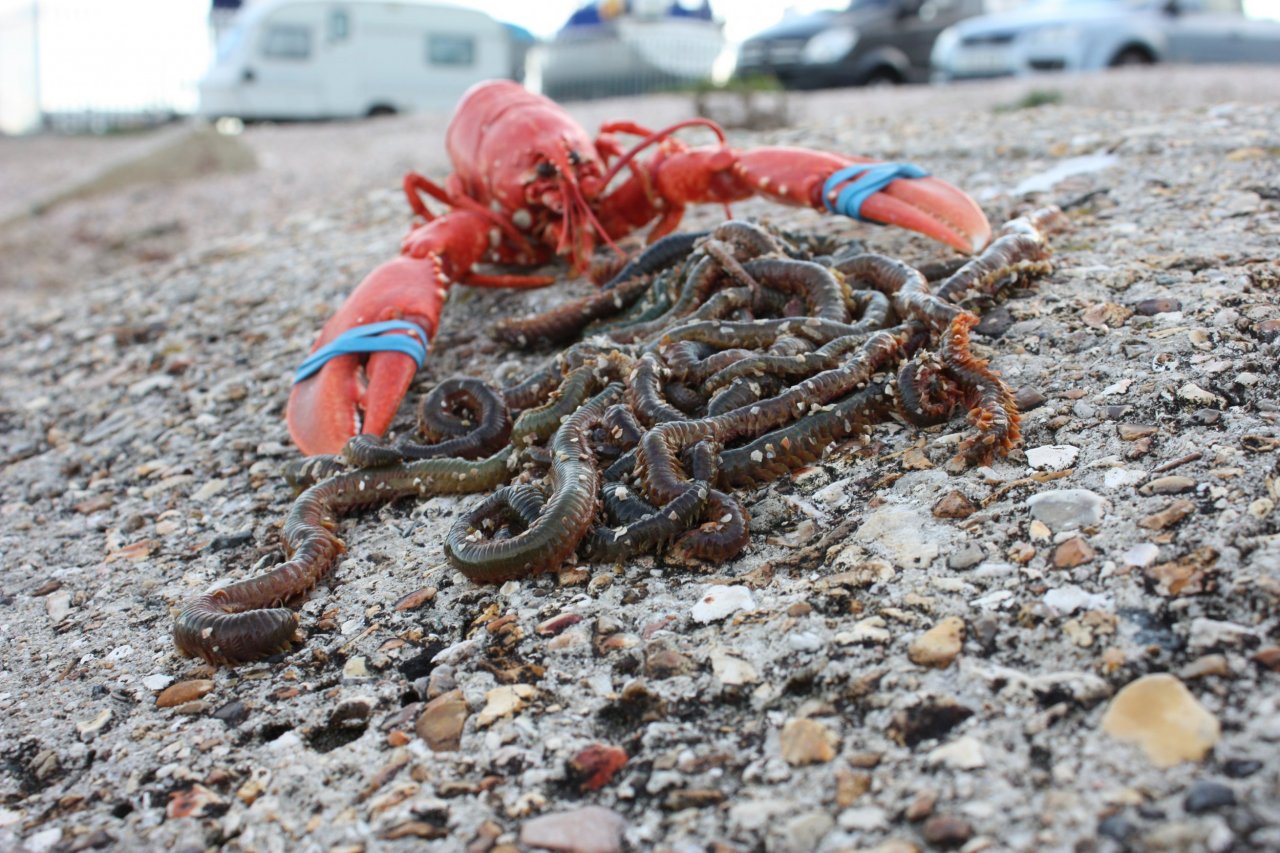The humble marine worms used to catch fish are some of the most valuable items to come out of the sea, new research shows.
For the first time, scientists have calculated the size and value of this overlooked industry. They estimate 121,000 tons of worms—worth nearly £6 billion (or about $7.5 billion in U.S. dollars)—are used for bait each year worldwide, most of these dug out of beaches and tidal flats. For comparison, that's more than three times the annual revenue generated by the U.S. sushi industry. The estimate is especially impressive since it pertains to the use of various types of marine worms in the ocean, and doesn't include freshwater fishing or the use of other live bait such as fish.
These worms are "more expensive than any [seafood] you can think of," says Gordon Watson, a researcher at the University of Portsmouth. Bloodworms, for example, used to catch fish like striped bass, will put you back more than $80 per pound in the United States, about four times the price of lobster.
Some of the most popular baits include ragworms, lugworms, sandworms and bloodworms. Fishermen use these to catch many different types of fish, including bass, whitefish, cod and other sought-after species, Watson says.
The worms are expensive because it takes a significant amount of effort to dig them up, they can be hard to find and they are obviously essential to snagging the catch that make up fishers' livelihoods.
To come up with the estimate, described in a study published in the journal Fish and Fisheries, Watson and colleagues surveilled several beaches throughout the world to see how often people dug up worms. They also surveyed fishermen about how many worms they use. Knowing the number of fishers worldwide, how much time they spend at sea and how many worms they generally use, they were able to extrapolate in order to come up with a worldwide figure.

These creatures generally live in the sand or silt at beaches and rarely leave their underground homes. They are ideal as bait because they are very smelly and tend to wriggle a lot on hooks, making them attractive and conspicuous to many species of marine fish, Watson says.
This industry has to date received little attention and oversight, something that ought to change, Watson says. Digging up worms can destroy beach areas, pollute the water and stress populations of predators like birds that rely on the animals for food. The study authors suggest that the use of bait worms ought to be regulated as with fish, perhaps limiting the time and place for digging as well as the quantity of worms removed.
The study "will stimulate regulatory bodies to consider what action might be required...for conservation reasons" but also to make bait-extraction itself a "sustainable fishery," says Matt Bentley, a marine biologist at Newcastle University Singapore, who wasn't involved in the study.
---
Read more at Newsweek.com:
- New Video Shows Great White Shark Eat Sea Lion in San Francisco
- Scientists Find an All-Black, Glowing Shark Species
- Feds Close Most of Northeast to Cod Fishing






















